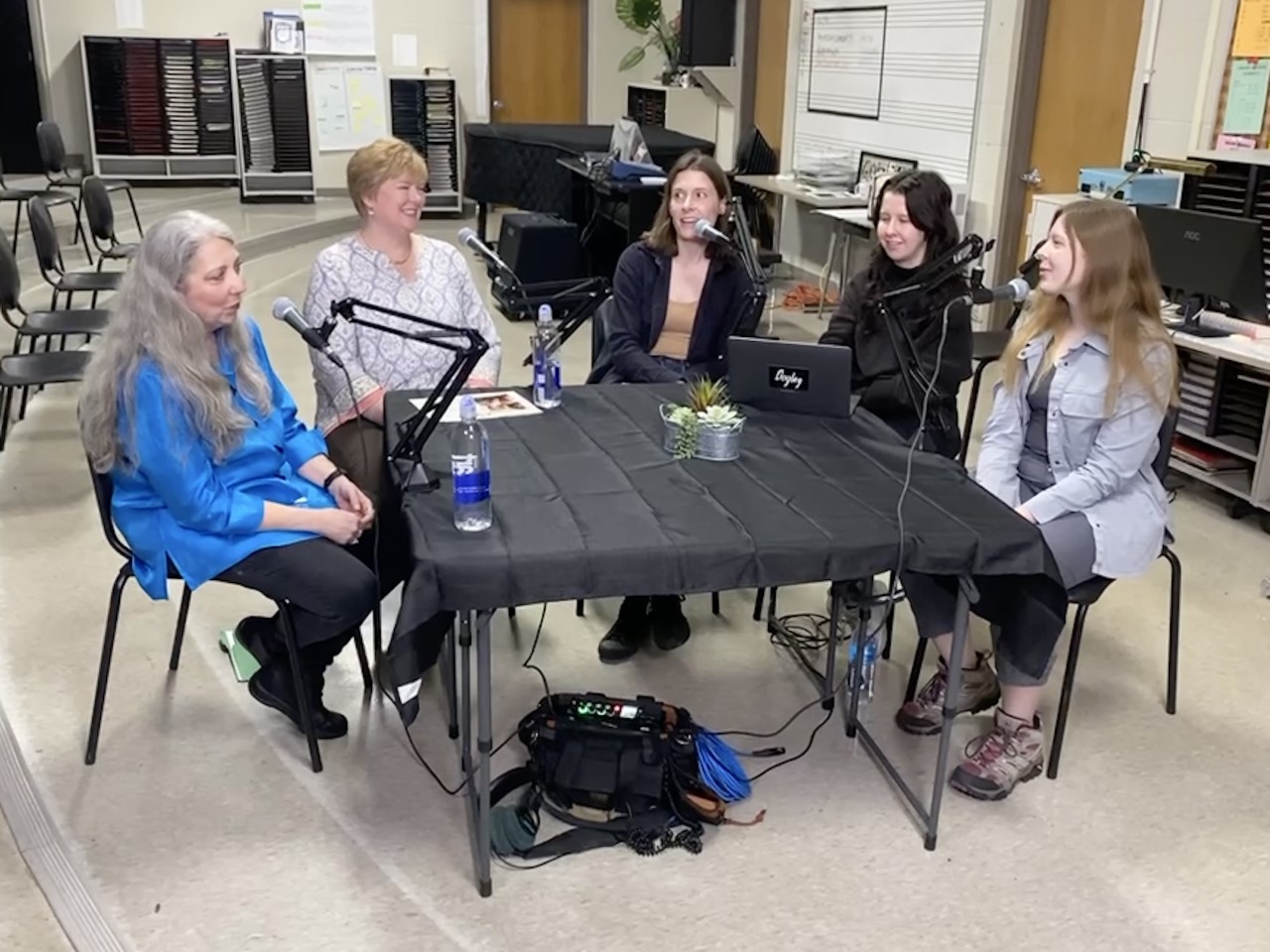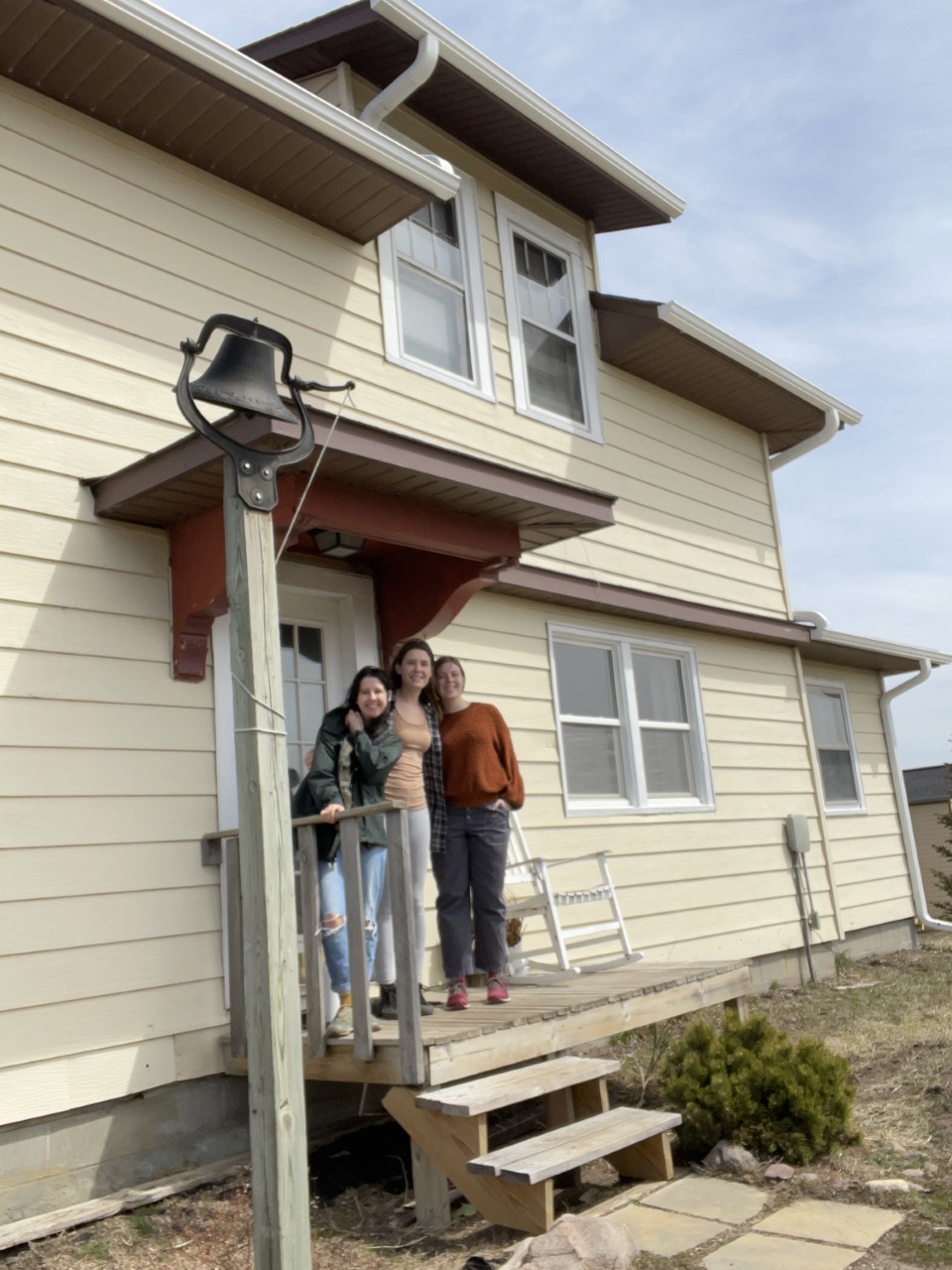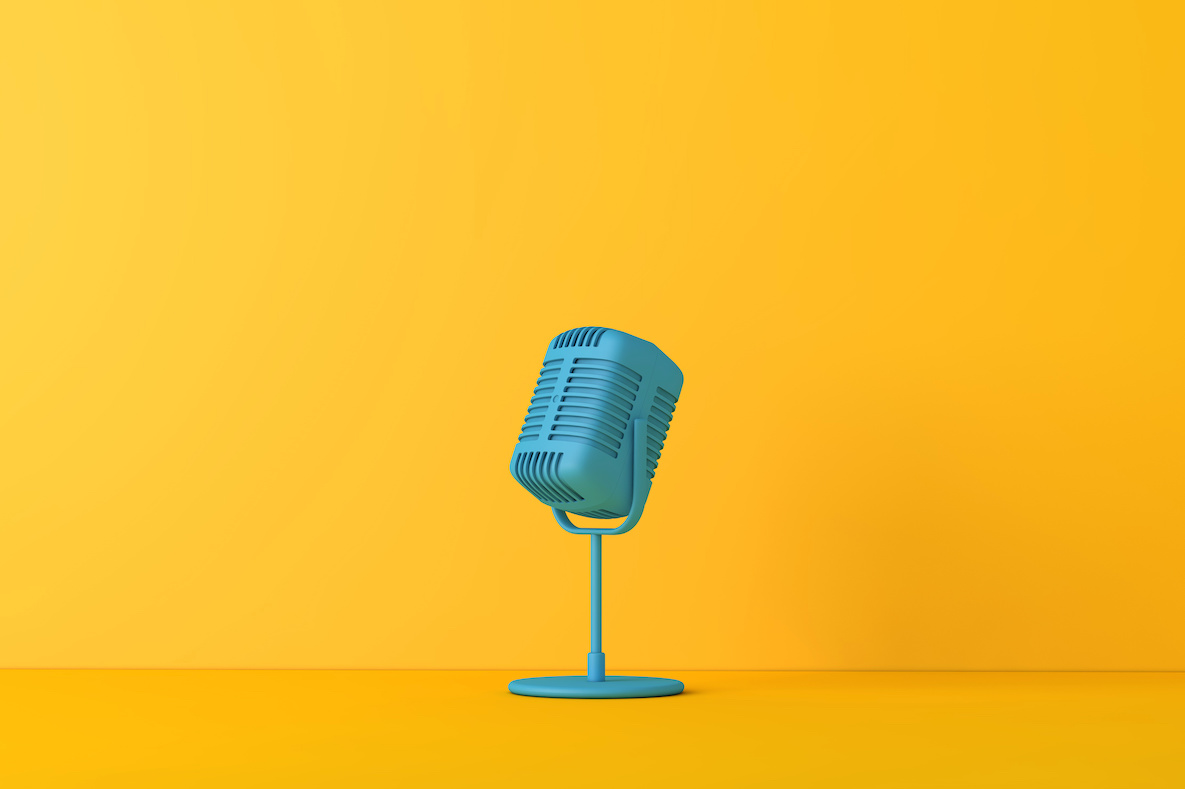When an Iowa State professor first asked her about creating a podcast together, Lydia Samuelson (’23 English, technical communication) was immediately all ears.
“I called my dad that night, excited, to tell him about the opportunity,” Samuelson said. “He was the one to introduce me to podcasts back in high school, and I have loved the medium ever since. I barely got the description of the podcast out before I hear from the other end of the line, ‘Wait, American Top 40? I listened to that show!’”
The podcast, titled “Dear Casey,” is the inspiration of Emma Murray, assistant teaching professor in the Department of English. Funded by the Iowa Arts Council and the National Endowment for the Arts, it explores the stories of people who requested song dedications during Casey Kasem’s American Top 40, a popular weekly radio show that aired from 1970 to 1988. Counting down the top 40 songs at any given week in America, variations of the show have continued to run, with different hosts and in different formats, ever since.
Murray, who was “raised on radio,” grew up listening to reruns of the show during family car rides. Alongside those top hits were timeless stories - “long-distance dedication” segments where the host Kasem read letters on air from listeners who wrote to request and dedicate specific songs.
One day about four years ago, Murray, a former investigative journalist, was driving home to Council Bluffs and listening to another rerun when an on-air dedication inspired an idea. It was a letter from a teenage girl from Cedar Rapids, Iowa, to a boy she had connected with while they were each staying at a mental health facility.
“I was like, ‘You know what, I think I could find her,’” Murray said. “And then I did.”
Bringing a podcast to life
As she prepared to start work on the project last fall, Murray knew she needed help. She thought of Samuelson, a student she had taught in two different Iowa State classes who was “sharp, detail-oriented, and good at editing” and had once mentioned a passion for podcasts.
“I remember the conversation starting with, ‘I remember you saying you listen to podcasts, right?’ Samuelson recalled. “It was incredible enough that a professor who taught one of my favorite classes had remembered what I said during our peer introduction video, but her tone said that there was something more. When she asked if I wanted to help her create a podcast, I was almost too excited to say, ‘Yes!’”
Samuelson first got hooked on podcasts thanks to “Welcome to Nightvale” and “Stuff You Should Know.” While she hadn’t previously listened to American Top 40, she did listen to 1970s and 1980s radio while driving to school every morning.
“Once I began working with the project, I was suddenly hearing the songs I hummed between classes in their temporal context alongside a whole host of new tunes to enjoy,” she said.
With the grant funding, Murray hired Samuelson as a research assistant and producer. Samuelson’s first task was to build a database of dedication writers to contact. She listened to old episodes to find the long-distance dedications - which started in 1978 - and entered even the “tiniest pieces of information” into her spreadsheets. Samuelson then began investigating how hard it would be to track down the letter writer.
“Everyone’s done the odd Google search for a past acquaintance, but this was taking it to a whole new level,” Samuelson said. “You have to get clever with how you search, and after a while you get a sense for which rabbit trails will actually lead you to a person and which will send you to an Austin Powers Facebook group. Sometimes all you have to go off is their name, a state and their Florida summer fling.”
“We have found that many of the dedication writers have stories that go deeper than just the music and touch on real-world issues.”
Once an episode is in production, Samuelson changes roles from research assistant to producer.
“In preparation for the interviews, I keep up communication with the interviewees and coordinate expectations, needs and locations alongside Emma,” she said. “One day might include the actual interview recording, while the next could be examining the audio file for top content.”
Endless material for episodes
With years of archives available, the “Dear Casey” team has a ready supply of stories, from cute remembrances of young love to local activism. Each episode aims to tell the story behind one letter and what happened to its writer in the decades since.
“People love those ‘Where are they now?’ stories,” Murray said. “I don’t know how many times I or my family have said, ‘I wonder what happened to so-and-so? They wrote this letter about mental health or lost love.’ There are so many topics covered in that long-distance dedication format.”
“They gave a platform to those people to share these experiences that are very human, so people felt like they were less alone.”
Among their first episodes is the story of Julie and Gary, who were show choir sweethearts at Grinnell High School in 1980. When the couple broke up in high school, 16 of their friends tried to get them back together by writing a dedication to American Top 40. To find them, Murray and Samuelson mailed letters to all Grinnell High School show choir members from that era.
The group of friends was in “disbelief,” Murray said, that someone cared about what happened to them 40 years ago.

“There is one I really want to do in small town Kansas where they had a school that was decrepit,” Murray said. “They requested ‘Another Brick in the Wall,’ by Pink Floyd, where they were like ‘Hey, our school is falling apart. We need this fixed for future generations.’”
Popular internationally, the show even received letters from as far away as Austria and Malaysia. Some are heartwarming, like a family who was proud of their international student for studying at an American university. Other letters touch on heavier topics, such as mental health.
“They gave a platform to those people to share these experiences that are very human, so people felt like they were less alone,” Murray said.
One episode in production this summer centers on an Ohio man who wrote a painfully poignant letter to the show in 1982. Then age 19, the man wrote on behalf of his father, who was paralyzed and unable to play baseball with his son or go fishing. The letter counseled other fathers and sons to be mindful about their time together, with a request to play “Cat’s in the Cradle” by Harry Chapin, a “knife in the heart” song, Murray said.
A perfect pairing for podcast production
Podcasting is full of real-world challenges, and Samuelson’s double major in English and technical communication is well-suited to meet them.
“It’s strange how you can barely mention podcasts during class, and yet nearly all of my experience can translate from class to this project,” Samuelson said.

Her business communication, technical communication, and science communication courses have helped her conduct business email correspondence and data analysis, she said, while her English major comes in handy for composing compelling episode scripts. In addition, Samuelson gained experience in navigating ethics, such as handling copyrighted material or sensitive story topics.
“We have found that many of the dedication writers have stories that go deeper than just the music and touch on real-world issues - one being mental health,” Samuelson said. “When it comes to these topics, our speaker’s comfort and willingness becomes our priority, as we would not want our interview questions or the podcast itself to trigger past traumas or undercut the importance of their experiences. As creators, we have a responsibility to those who are helping us and those who listen to our work.”
Samuelson’s favorite part of the project has been working with Murray and Des Moines-based writer Allaire Nuss to write episode scripts, she said. The team spends hours reviewing interview transcripts to find common threads and a cohesive narrative.
“It feels great to work with other people interested and invested in the same material, especially when you can look up from the paragraph you’re working on, bounce an idea off the person across from you, and see the script take shape through the edits,” Samuelson said. “You can crack your knuckles at the end of the night and look back at the scenes and time stamps and dialogue knowing that you were the one to tease it out from an audio file and a blank document.”
Tuned in to teamwork
With a few episodes in production and more on the way, the podcast’s first episode is set to release later this year and will be available on Spotify. As a podcast fan and now podcast producer, Samuelson is grateful she joined the “Dear Casey” team and for the hands-on learning experience she has gained.
“It’s strange how you can barely mention podcasts during class, and yet nearly all of my experience can translate from class to this project.”
“Projects are truly collaborative processes,” Samuelson said. “In class, group work is often viewed as a pain, but I have continually found that working with others is not only expected but the norm when creating products in the real world. Establishing good communication and being willing to adapt creates the opportunity for wonderful partners to come alongside your work.”
